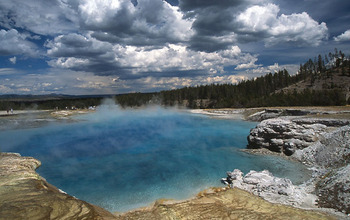
Yellowstone's hot springs will be sampled in an NSF Dimensions of Biodiversity project.
Credit and Larger Version |
September 27, 2013
The diversity of life on Earth is seemingly endless, yet much still remains to be discovered. With climate change and habitat loss threatening that biodiversity, the challenge of discovery is a race against time.
To fill the gaps in understanding our planet's biodiversity, the National Science Foundation (NSF) has awarded 13 grants totaling $25 million in the fourth year of its Dimensions of Biodiversity program.
Dimensions of Biodiversity is part of NSF's Science, Engineering and Education for Sustainability investment.
Centuries of biological research have established a strong foundation for our understanding of biodiversity.
In the past, however, researchers have sought to understand a single dimension of biodiversity--the diversity of species at the genetic level, species diversity in a taxonomic group, or the diversity of roles certain species play in an ecosystem.
Scientists funded by the Dimensions of Biodiversity program, however, integrate genetic, taxonomic, and functional approaches in their study and exploration.
The Dimensions of Biodiversity awards are supported by NSF's Directorates for Biological Sciences and Geosciences along with NASA, which co-funds projects that use state-of-the-art remote sensing technologies.
Collaborative projects between U.S. and Chinese, and U.S. and Brazilian researchers are co-funded by the National Natural Science Foundation of China (NSFC) and the Sao Paulo Research Foundation (FAPESP), respectively.
"The resulting discoveries go beyond expanding our knowledge of the depth and breadth of life on Earth," says John Wingfield, NSF assistant director for Biological Sciences.
"This research has the potential to revolutionize the way we practice medicine, manage agriculture, address global climate change, and develop new technologies," Wingfield says.
"The synergy created by integrating recent technological advances with collaborations across disciplines and across continents allows these researchers to make significant progress in our understanding of biodiversity."
This year's Dimensions of Biodiversity awardees will study subjects such as: the biota of the critically endangered Brazilian Atlantic forest; microbes living in deep shale deposits; the adaptive radiation of bird lice; the diversity of gut flora in herbivorous woodrats; interactions between floral scents and pollinators; and succession in forests of the Thousand Island lakes area in China .
Grantees will also conduct research on diversification in Adelpha butterflies; nutrient cycling in bivalves' symbiotic organisms; ocean bacteria that help regulate sulfur emissions into the atmosphere; remote sensing technology as a tool for understanding plant and microbial biodiversity; the co-existence of diverse clover species and nitrogen-fixing bacteria; drought tolerance in grasses; and host-viral interactions in hot springs.
2013 NSF Dimensions of Biodiversity Awards:
Mary Ann Moran, University of Georgia,
Additional Collaborators: William Whitman, University of Georgia, James Birch and Christopher Scholin, Monterey Bay Aquarium Research Institute, and Ronald Kiene, University of South Alabama
Sharon Strauss, University of California Davis,
Additional Collaborators: Maren Friesen, Michigan State University
Mark Young, Montana State University,
Additional Collaborators: Joshua Weitz, Georgia Institute of Technology; Rachel Whitaker, University of Illinois at Urbana-Champaign
Joseph Craine, Kansas State University,
Additional Collaborators: Lynn Clark, Jesse Nippert and Mark Ungerer, Kansas State University, Melvin Duvall, Northern Illinois University, and Christopher Still, Oregon State University
Jeannine Cavender-Bares, University of Minnesota Twin Cities,
Additional Collaborators: Sarah Hobbie and Rebecca Montgomery, University of Minnesota Twin Cities, Michael Madritch, Appalachian State University, Philip Townsend and Richard Lindroth, University of Wisconsin Madison, and Arthur Zygielbaum and John Gamon, University of Nebraska Lincoln
Ana Carnaval, CUNY City College,
Additional Collaborators: Michael Hickerson and Kyle McDonald, CUNY City College, Fabian Michelangeli and William Thomas, New York Botanical Garden
Dale Clayton, University of Utah,
Additional Collaborators: Sarah Bush and Michael Shapiro, University of Utah, Kevin Johnson University of Illinois Urbana-Champaign
Annette Engel, University of Tennessee Knoxville,
Additional Collaborators: Laurie Anderson, South Dakota School of Mines and Technology, Barbara Campbell, Clemson University
Denise Dearing, University of Utah,
Additional Collaborators: Colin Dale and Robert Weiss, University of Utah
Sean Mullen, Boston University,
Additional Collaborators: Ryan Hill, University of the Pacific, Marcus Kronforst, University of Chicago, Keith Willmott, University of Florida, Adriana Briscoe, University of California Irvine
Paula Mouser, Ohio State University,
Additional Collaborators: David Cole, Michael Wilkins, and Kelly Wrighton, Ohio State University, and Shikha Sharma, West Virginia University
Lin Jiang, Georgia Institute of Technology,
Additional Collaborators: Jianguo Wu, Arizona State University
Krissa Skogen, Chicago Botanic Garden,
Additional Collaborators: Jeremie Fant and Norman Wickett, Chicago Botanic Garden, Rachel Levin, Amherst College, Robert Raguso, Cornell University
-NSF-
Media Contacts Cheryl Dybas, NSF (703) 292-7734 cdybas@nsf.gov
Related WebsitesNSF News: Stemming the Tide of Biodiversity Loss on Earth: http://www.nsf.gov/news/news_summ.jsp?cntn_id=125495&org=NSF&from=news
NSF News: Diversity of Life on Earth: NSF Awards Grants for Study of Dimensions of Biodiversity: http://www.nsf.gov/news/news_summ.jsp?cntn_id=122098
NSF News:
NSF News: Diversity of Life on Earth: NSF Awards Grants for Study of Dimensions of Biodiversity: http://www.nsf.gov/news/news_summ.jsp?cntn_id=122098
NSF News:
NSF Awards Grants to Study Dimensions of Earth's Biodiversity: http://www.nsf.gov/news/news_summ.jsp?cntn_id=117811&org=NSF&from=news
NSF Discovery Article:
NSF Discovery Article:
Biodiversity of Earth's Richest Plant Kingdom Under Fire: http://www.nsf.gov/discoveries/disc_summ.jsp?cntn_id=122938&org=NSF
NSF Discovery Article:
NSF Discovery Article:
Earth Week:
A Stream Is a Stream Is a Stream: Or Is It?:
http://www.nsf.gov/discoveries/disc_summ.jsp?cntn_id=123855&org=NSF
NSF Publication: Discoveries in Sustainability: http://www.nsf.gov/pubs/2012/disco12001/disco12001.pdf
NSF Publication: Discoveries in Sustainability: http://www.nsf.gov/pubs/2012/disco12001/disco12001.pdf
The National Science Foundation (NSF) is an independent federal agency that supports fundamental research and education across all fields of science and engineering. In fiscal year (FY) 2012, its budget was $7.0 billion. NSF funds reach all 50 states through grants to nearly 2,000 colleges, universities and other institutions. Each year, NSF receives about 50,000 competitive requests for funding, and makes about 11,500 new funding awards. NSF also awards about $593 million in professional and service contracts yearly.
Useful NSF Web Sites:
NSF Home Page:
NSF Home Page:
http://www.nsf.gov
NSF News:
NSF News:
http://www.nsf.gov/news/
For the News Media:
For the News Media:
http://www.nsf.gov/news/newsroom.jsp
Science and Engineering Statistics:
Science and Engineering Statistics:
http://www.nsf.gov/statistics/
Awards Searches:
Awards Searches:
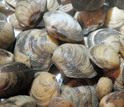
Chemosymbionts in shellfish like thick lucines, collected in Florida, are being studied.
Credit and Larger Version
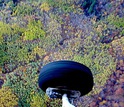
Aerial photo showing color differentiation of genetically distinct aspen clones in Wisconsin.
Credit and Larger Version
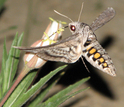
A hawkmoth drinks nectar: Flowers and moths are among the Dimensions of Biodiversity awards topics.
Credit and Larger Version
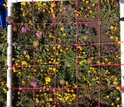
NSF Dimensions of Biodiversity researchers will study plant biodiversity in small plots.
Credit and Larger Version

This lizard lives in Atlantic forests and in Amazonia; scientists are comparing these ecosystems.
Credit and Larger Version
The National Science Foundation (NSF)
Guillermo Gonzalo Sánchez Achutegui

No hay comentarios:
Publicar un comentario